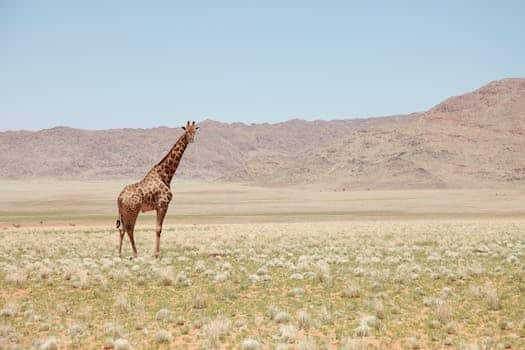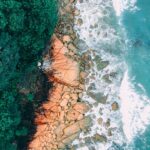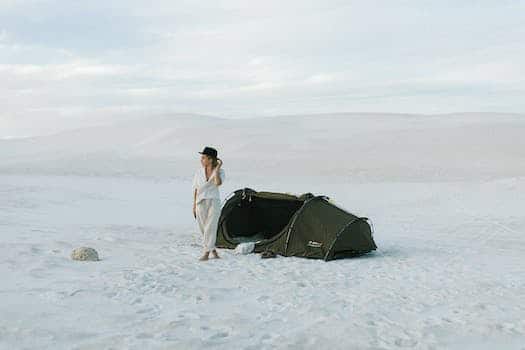The wide, unspoiled desert attracts explorers and ecotourists because of its breathtaking beauty. Desert wilderness camping is a necessity for adventurers looking for something completely out of the ordinary. The desert’s harsh beauty, boundless views, and spectacular sunsets provide a unique opportunity to feel at one with nature. In this piece, we’ll delve into the joys of desert wilderness camping, from the perils and glories of surviving in such a harsh environment to the spectacular sights and sounds that await those who set out into the unknown.
- 1. Preparing for your wilderness camping trip
- 1.1. Selecting the right gear
- 1.2. Choosing the best campsite
- 1.3. Preparing your meals
- 1.4. Staying safe in the desert
- 1.5. Navigating the terrain
- 2. Surviving in the desert wilderness
- 2.1. Staying hydrated
- 2.2. Dealing with extreme temperatures
- 2.3. Avoiding dangerous wildlife
- 2.4. Handling medical emergencies
- 2.5. Managing your resources
- 3. Enjoying your desert camping experience
1. Preparing for your wilderness camping trip
Preparation is the key to having a successful and pleasurable desert camping adventure in the wilderness. You should begin by learning about the landscape, climate, and local hazards and fauna you might encounter on your trip. Include a strong tent, sleeping bag, cooking utensils, and plenty of water on your list of necessities. Sun protection and layers for the desert’s cold evenings should also be included in your desert-ready wardrobe. Finally, advise someone of your route and estimated return time, and pack a map, compass, or GPS device so that you can find your way around the rough terrain.
1.1. Selecting the right gear
Having the proper equipment is crucial when planning a camping trip in the woods. It’s crucial to pack stuff that will keep you cool and out of the sun when you’re exploring the desert. A high-quality sleeping bag and pad, as well as a robust tent with adequate ventilation, are essential. Lightweight, airy, and UV-blocking garments are recommended. Don’t forget to pack plenty of water and a way to clean it up, either. The wonders of desert wilderness camping may be fully appreciated with the correct equipment.
1.2. Choosing the best campsite
Choosing the correct campground can make or ruin a desert camping adventure in the outdoors. Find someplace that’s shaded during the day’s hottest hours yet still has good air circulation. You shouldn’t camp in dry riverbeds or washes because of the risk of flash floods. Water sources and closeness to trails and other attractions are also important factors to think about. Your enjoyment of desert camping will skyrocket if you choose a suitable campsite.
1.3. Preparing your meals
Meals should be planned in advance for your camping vacation in the wild. Think about how long your vacation will be and how many people you’ll be traveling with to determine how much food to pack. Snacks can quickly add up over the day, so be sure to bring along some nonperishables like almonds, dried fruits, and energy bars. Dehydrated meals and quick noodles are two examples of lightweight, easy-to-prepare food solutions. Remember to pack some cooking fuel and a portable stove. Also, don’t forget the pots, pans, dishes, and silverware! Leave the woods in the same condition as you found it by packing out all of your garbage and leftover food.
1.4. Staying safe in the desert
If you want your desert camping vacation to go off without a hitch, it’s crucial that you take the necessary safety measures beforehand. Some advice on how to avoid harm in the desert:
1. Drink plenty of water; the desert climate may be very hot and dry, so staying hydrated is crucial. Pack enough water to last the duration of your journey, and bring some extra just in case.
Second, take precautions against UV damage by covering yourself and using sun protection products. This includes donning a hat, sunglasses, and long-sleeved shirts. If you must be outside during the warmest periods of the day, make sure to take frequent rests in the shade.
Finally, keep an eye out for desert critters including snakes, scorpions, and spiders. Keep your wits about you and don’t bother any wildlife you might come across.
You may experience the beauty of desert wilderness camping without risk if you follow these guidelines.
2. Surviving in the desert wilderness
It’s not easy, but it may be quite rewarding, to test your mettle in the desert wilderness. First, make sure you have enough supplies to last the entire trip, including food, water, sunscreen, and clothing suitable for the hot, dry weather. The desert region is wide and unforgiving, so it’s crucial to plan ahead and do your homework before venturing there. Avoiding the heat of the day and setting up camp in a shady spot can also assist. Wilderness camping in the desert may be a life-changing experience if you go into it with an eye toward safety and adequate planning.
2.1. Staying hydrated
If you’re going desert camping and exploring the great outdoors, remember to drink enough of water. When combined with little humidity, high temperatures can cause rapid dehydration. Even if you don’t think you’re thirsty, try to consume several liters of water daily. Always have a water bottle on hand, and fill it up whenever you can. You can prevent further dehydration by avoiding alcohol, coffee, and sugary drinks. Fruits and vegetables, which contain a lot of water, can also assist you maintain your body’s water balance. Keep in mind that the key to survival in the desert is to drink plenty of water.
2.2. Dealing with extreme temperatures
Dealing with the heat is a major obstacle when desert camping in the bush. Daytime highs can often exceed 100 °F, while nighttime lows can dip into the freezing range. Wearing adequate clothing and maintaining fluid intake are essential for survival in these temperatures. Protect yourself from the sun by dressing in lightweight, loose fitting clothing. Make sure to stay hydrated during the day and bring extra water with you on hikes. Caffeine and alcohol can contribute to dehydration and should be avoided. You should also camp in a place that offers some natural shelter from the elements and shade during the warmest portions of the day. Camping in the desert’s vast wilderness can be an incredible experience, but only if you come prepared.
2.3. Avoiding dangerous wildlife
Avoid potentially life-threatening animals when camping in the desert outback. Vipers, scorpions, and poisonous spiders all fall within this category. Always shake off your shoes before putting them on, and remember to wear protective apparel like long pants and boots. Avoid inviting mice and other unwanted guests to your campsite by keeping it tidy and trash-free at all times. Animals should be given their space and handled with extreme caution if and when encountered.
2.4. Handling medical emergencies
It’s crucial to have a plan in place in case of a medical emergency while out in the desert. This necessitates the preparation of a first aid package, complete with bandages, antiseptic, and pain medicines. Know how to get in touch with emergency services and administer first aid until professional help comes. Keep hydrated, wear protective gear, and keep an eye out for wildlife to avoid frequent desert medical issues including heat stroke, dehydration, and snake bites. You may enjoy the beauty of desert wilderness camping in complete safety if you and your companions are well-informed and well-prepared.
2.5. Managing your resources
Camping in the desert requires careful management of supplies. Be sure to pack plenty of water for drinking, cooking, and cleaning, as it is the most crucial commodity. Bring more supplies than you think you’ll need, and plan ahead. Water conservation measures such as taking shorter showers and recycling used water should also be implemented. Food is a valuable asset as well. Pick things that won’t perish in the heat and can be prepared quickly. Bring a lot of food to keep your energy up. Finally, for the sake of this rare environment, please leave the wilderness in the same condition in which you found it.
3. Enjoying your desert camping experience
A night spent under the stars in the desert is sure to stick with you. There’s something mystical about sleeping under the stars on a desert plain. It’s best to be ready for everything in the desert so you can make the most of your camping trip. In the desert, staying hydrated is essential, so be sure to pack plenty of water. Sunscreen and a hat are essential items to bring along to prevent sunburn. Find a spot with natural windbreaks, like large boulders or plants, to shelter your camp from the sandstorms. Finally, don’t forget to get out and experience the stunning desert terrain by exploring the local wilderness. Camping in the desert may be a life-changing experience if you go into it with an open mind and sufficient preparation.
3.1. Exploring the natural wonders
Camping in the desert is a one-of-a-kind adventure that opens up a whole new world of natural beauty. Cacti, lizards, and birds are only some of the desert’s many native inhabitants. Set up tent in a spot where you can take in the untamed beauty of the desert landscape. Observe the sun setting over the horizon and the night sky filled with stars. Discovering the desert’s hidden treasures is an adventure you won’t soon forget.
3.2. Taking stunning photographs
Stunning photography is an integral aspect of any camping trip, but the desert presents unique photographic challenges. It can be challenging to capture the beauty of the terrain due to the strong sunshine and austere environment. With with practice, though, you may capture breathtaking images that will serve as lasting mementos of your desert camping trip. Some items to remember are as follows.
– Capture your images during sunrise and sunset, also known as “the golden hours,” when the light is at its most flattering. The desert’s textures and hues are more brought out by the softer, warmer light.
A polarizing filter will help reduce reflections and glare, allowing you to capture more accurate colors and details in your landscape photos.
The desert may look lifeless at first, but there are actually many interesting things to photograph there, such as cacti, rock formations, and even some unique desert wildlife. To make your photographs stand out, seek out unusual viewpoints.
Don’t be scared to try new things with your composition and frame. Use leading lines to direct the eye into your photograph, and experiment with shooting from a variety of perspectives.
Keeping these suggestions in mind will allow you to produce images that do justice to the beauty and wonder of the desert.
3.3. Connecting with nature
Need a gluten-free sweet treat recipe? Here is a fantastic recipe for a gluten-free apple pie. It’s the ideal dessert because it has a crisp crust and a delicious apple filling. Recipe after the jump!
1 1/2 cups of gluten-free all-purpose flour 1/2 teaspoon of salt
One-half cup of cold, cubed unsalted butter
– Four to six tablespoons of cold water
6 cups of apple slices, thinly cut
– One-half cup of dark sugar
Cinnamon, one teaspoon
14 teaspoon of nutmeg
1/4 teaspoon of salt; 2 tablespoons of melted butter
Instructions:
To begin, set the oven temperature to 375 degrees Fahrenheit.
Then, combine the flour, salt, and baking powder in a large bowl. Butter should be added and the flour and butter should be worked together with a pastry cutter or fingertips until the mixture resembles coarse crumbs.
3. Add the ice water gradually while continuing to stir until a ball of dough forms.
Fourth, flour a work surface, roll out the dough, and then place it in a 9-inch pie pan.
5 Combine the sliced apples with the brown sugar, spices (cinnamon, nutmeg, and salt), and a pinch of salt in a separate bowl. Put the filling into the pie shell.
Six, after the butter has melted, brush it all over the pie.
To make sure the crust is golden and the filling is bubbling, bake it for 45-50 minutes.
Eight, wait at least half an hour for the pie to cool before cutting into it.
Serve this gluten-free apple pie with some vanilla ice cream or whipped topping for a wonderful dessert.
3.4. Experiencing the solitude
Desert camping offers a rare and wonderful opportunity to experience the quiet of the desert. Away from the hustle and bustle of the city, you may relax and take in the quiet beauty of nature without interruption. The vastness of the sand and sky inspires amazement and wonder and serves as a sobering reminder of our insignificance in the grand scheme of things. The desert provides a unique setting for recharging your batteries and strengthening your bonds with nature, whether you’re relaxing by the campfire or going on a long, solitary journey.
3.5. Relaxing and unwinding
After a day of exploring the desert’s vast wildness on foot, it’s essential to decompress and chill out. The tranquility of the desert and the company of your closest friends around a campfire are two of life’s greatest pleasures. Relaxing in the desert may be a lot of fun if you give yourself time to do something you enjoy, like reading, meditating, or just hanging out with your fellow campers.
Conclusion
Need a gluten-free sweet treat recipe? These gluten-free lemon bars are to die for! These bars, made with almond flour and coconut sugar, are fluffy, tart, and delicious. So, here’s the deal:
Ingredients:
This is the crust.
Two cups of almond flour One-fourth cup of melted coconut oil
2 tablespoons of maple syrup
14 teaspoon of salt
To make the stuffing:
– 4 jumbo eggs
– 1/2 cup of freshly squeezed lemon juice – 1 1/2 cups of coconut sugar
One-fourth cup each of almond and tapioca flour
14 teaspoon of salt
– Dusted with powdered sugar (optional).
Directions:
First, have a 350°F oven ready. Prepare a baking sheet (8 inches by 8 inches) with parchment paper.
To make the dough, combine the almond flour, coconut oil, maple syrup, and salt in a medium bowl and whisk until a loose dough forms. Spread the dough out evenly across the bottom of the dish.
In a preheated oven, bake the crust for 10 to 12 minutes, or until it is just beginning to turn brown.
Fourth, while the crust is baking, prepare the filling. Eggs, coconut sugar, lemon juice, almond flour, tapioca flour, and sea salt are whisked together in a large bowl.
Spread the filling evenly over the baking crust and then pour on the filling.
The filling should be set and the bars gently brown after 20-25 minutes in the oven.
Wait for the bars to cool completely in the pan before cutting them into squares and dusting them with powdered sugar (if using).
These gluten-free lemon bars are an excellent choice if you’re looking for a light dessert.





